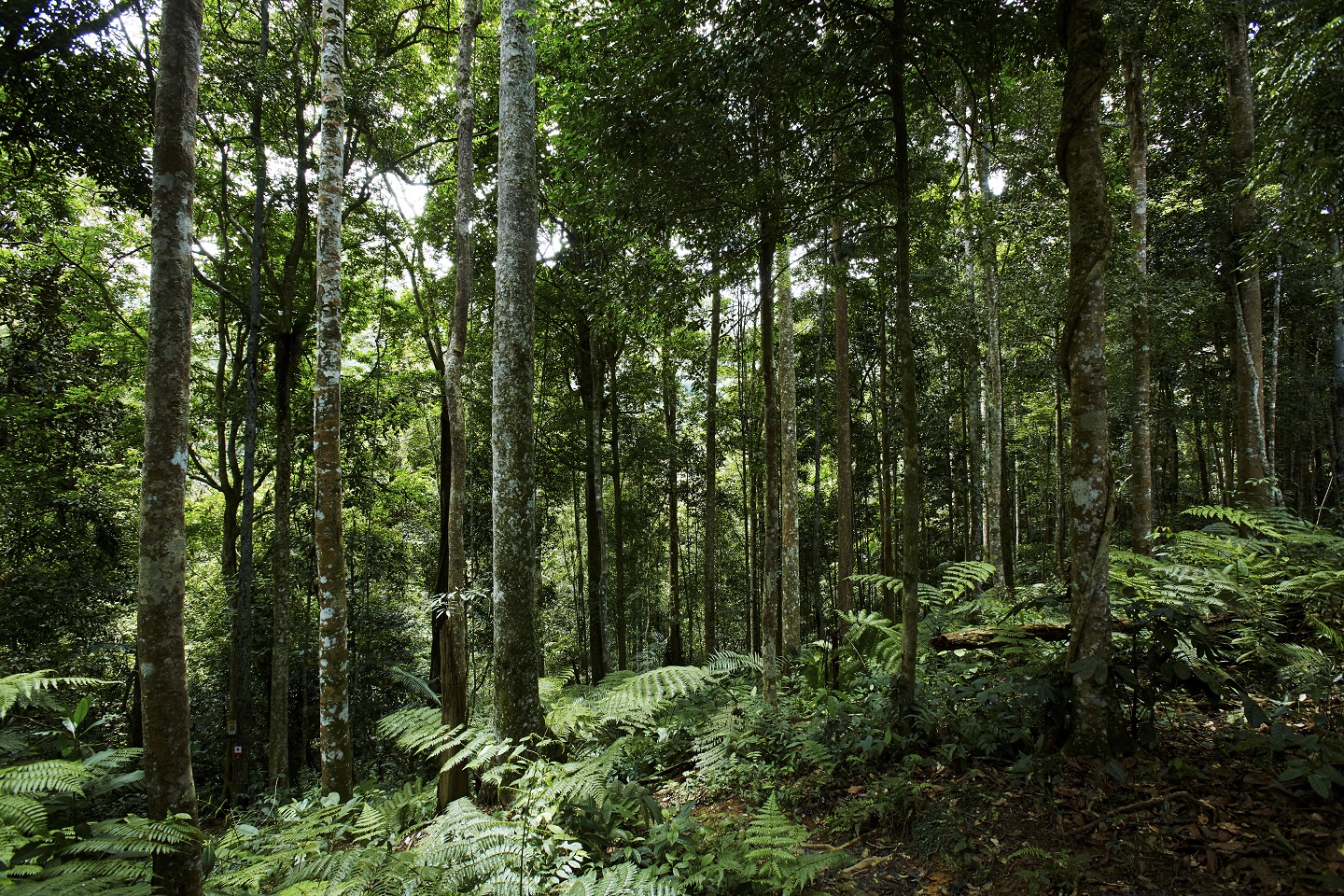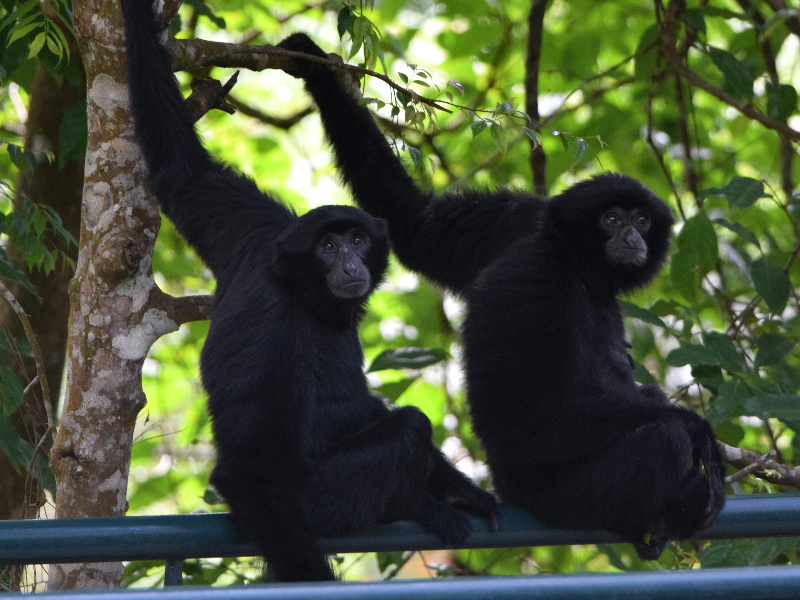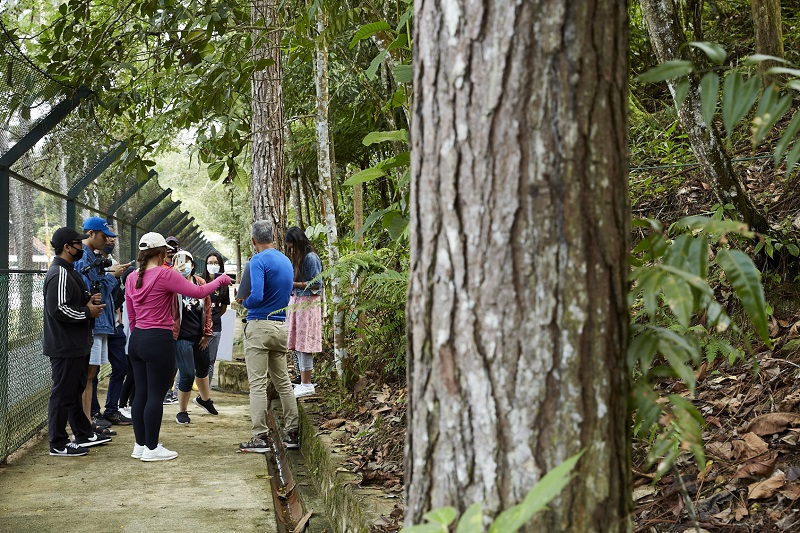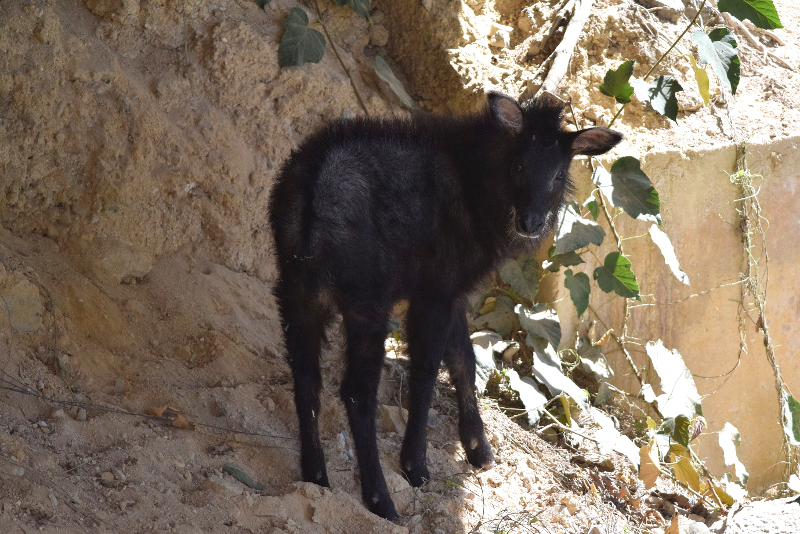
Genting's uniquely diverse tropical montane rainforest (Photo: Soophye)
As the indigo skies gently lightened at the crack of dawn, the mountainous Genting Highlands peaks were seen shrouded in clouds of mist. Fine vapour diffused the morning sunlight and chilled the air with a brisk breeze. It was as though a peaceful hush had enveloped the highlands, save for the birds that woke the forest with songs.
It is surely not the type of scene that comes to mind when one thinks of Genting Highlands. Weekenders are usually greeted with flashy signs and throngs of crowds. After all, Resorts World Genting (RWG) — the chief reason thousands ascend the mountaintop — is a hub of entertainment. So, this change of scenery, or rather, the discovery of a lesser-realised side of the highlands was rather refreshing.
Mid-morning, we approached the starting point of a paved trail that borders the perimeter of the 18-hole golf course at Resorts World Awana. It is one of the seven nature trails where hikers can explore the mountain’s ecosystems.
“We are about to enter an atmospheric pressure door,” said RWG’s environmental services manager Eddie Chan, who also acted as our guide that day. The change in pressure due to elevation usually causes one to breathe heavier than usual as the body is adjusting.
Chan pointed out native and non-native plants growing along the newly constructed path — named the Awana Trail — while explaining that his team was experimenting to see what could or could not thrive in this particular area.
_s1a2427.jpg

We came across several boards with QR codes that open up web pages with audio-visual content offering information on the surrounding wildlife and environment. While it may sound counter-intuitive, considering many of us seek out nature to break away from the internet, the boards serve as a helpful tool for others, especially young’uns growing up in the internet age, to learn more about their surroundings. Chan said the forest is equipped with WiFi to encourage such interactions.
A wealth of flora and fauna, including a fair number of endemic, rare and native species of plants and wildlife, reside in the tropical montane rainforests of Genting Highlands. During our walk, we chanced upon pitcher plants, massive millipedes and adorable dusky leaf monkeys, which are unfortunately endangered. The highlands is also home to endangered gibbons — siamangs, to be exact — and serows, a kind of wild mountain goat.
The bulk of Chan’s duties involve being on the ground, monitoring the area’s wildlife as well as implementing initiatives that sustain and benefit the location’s ecosystem.
“We focus on four pillars, namely conservation, which entails in-situ or ex-situ activities concerning our forest habitats and biodiversity; preservation, of land kept as forest reserves or not used for development; sustainability, in the cases where there is collateral damage, how do we rejuvenate and rehabilitate plants and wildlife; and education, how we inform and translate collected data to the public.”
Chan’s team also carries out important mitigation and enrichment activities for wildlife welfare.
papa_and_mama_megatron_2_1.jpg

“If you take some of the forest out, there’s a cavity. We plant specific trees in between so animals can transit. When birds fly, they can rest before they get to the other side. We give our gibbons simple facilities like rope cables that connect from tree to tree, so they can enjoy swinging over that particular area. If we do that correctly and professionally, it will allow us to also enjoy, on a regular basis, sightings of the gibbons in a no-contact manner.”
He explicitly emphasised that the area is not a zoo nor a safari, where animals are routinely fed or props are placed for them to interact in front of an audience. The animals have free rein and shall continue to do so. It is their territory, after all. But this also means clashes with humans are unavoidable. In spite of that, Chan stressed that there can be co-existence.
“In fact, it’s already happened. We’re in the midst of co-existence. Genting is 57 years old. In those 57 years, they were not under major threat. What’s more astounding is that they have actually learnt to adapt. They have shown that they could cross our roads and come into our compounds safely.”
He recalled a time where he was notified of a sleuth of bears doing just that. “These are intelligent animals and they have lived in our midst.
“This is not in the context of the black gibbons, yeah,” Chan joked. “The naughty fellas will always be naughty lah.
“But then again, we had the opportunity to observe a pair of gibbons for three years. We named them Romeo and Juliet. (They have names because we want to endear them to us.) They lived across the road and they crossed it for three years and never got killed, never got injured. Until they decided they would move on beyond the hills and find their own enclave. And the reason they decided to do that was because they had a baby (we named it Roger).”
_s1a2403.jpg

Chan sees the wildlife in Genting as an asset and appreciates and acknowledges their importance to the overall health of the forest.
“All our initiatives now, whether it’s conservation, preserving the land they live on, sustainability or educating the public, are to help the wildlife continue from here. They’ve come to our compound, so how do we sustain them, what can we learn from them to enrich their existence and get them to continue to stay for generations?”
In reality, there are clues everywhere. The gibbons are territorial creatures and will not encroach on another gibbon family’s territory if they can help it. Similarly, they fiercely guard their own. Different families have occupied varying spaces for years and rarely crossed paths, which also means they are used to dissimilar landscapes, degree of human contact, and so on.
“Knowing this allows us to have a better, clearer and more functional approach to sustaining and enriching the gibbons.”
The same applies to the wild goats (Yang Yang and Mei Hua) that occupy Chin Swee Caves Temple or the black panther (Charlie) that calls part of the jungle, not too far away from the Awana Trail, its own.
Another way is to generate more awareness of the groundwork that has been laid so more scientists, academicians and professionals, such as primatologists, environmentalists, horticulturists, entomologists and other experts in the related field, can get involved. “That is why my team’s job is to get people to focus on this, not only bring them for walks. We have this responsibility as environmental stewards.”
serow.jpg

Let us not forget there are other property owners on that mountain. While environmental sustainability forms the cornerstone of Genting Malaysia’s business and strategic priorities, others may not be able to manage their operational impact as well.
“Other property owners who clear the forest will face wildlife migration. When they do, in our observation, they end up on our land, which means our assets will increase and congestion will happen. We can feel it on the ground. You can hear the gibbons singing. Previously, they sang to entertain themselves, now they sing because they are holding their ground. They are feeling the tension.
“We have to be ready for that,” Chan acknowledged, deep in thought.
According to him, less than 10% of land owned by Genting Malaysia is used for development, pointing out how wildlife inhabits the bulk of the land.
“We want to promote their continued coexistence because the forest is rightfully theirs. Even if we own the forest, it is rightfully theirs. That’s what our owner [Tan Sri] Lim Kok Thay said. They should have free passage. No catching, no trapping. Prevent whatever [conflict] necessary, but let them go where they want to. And I take it as a good policy.”
For more information on the trails, see here.
This article first appeared on Aug 22, 2022 in The Edge Malaysia.


